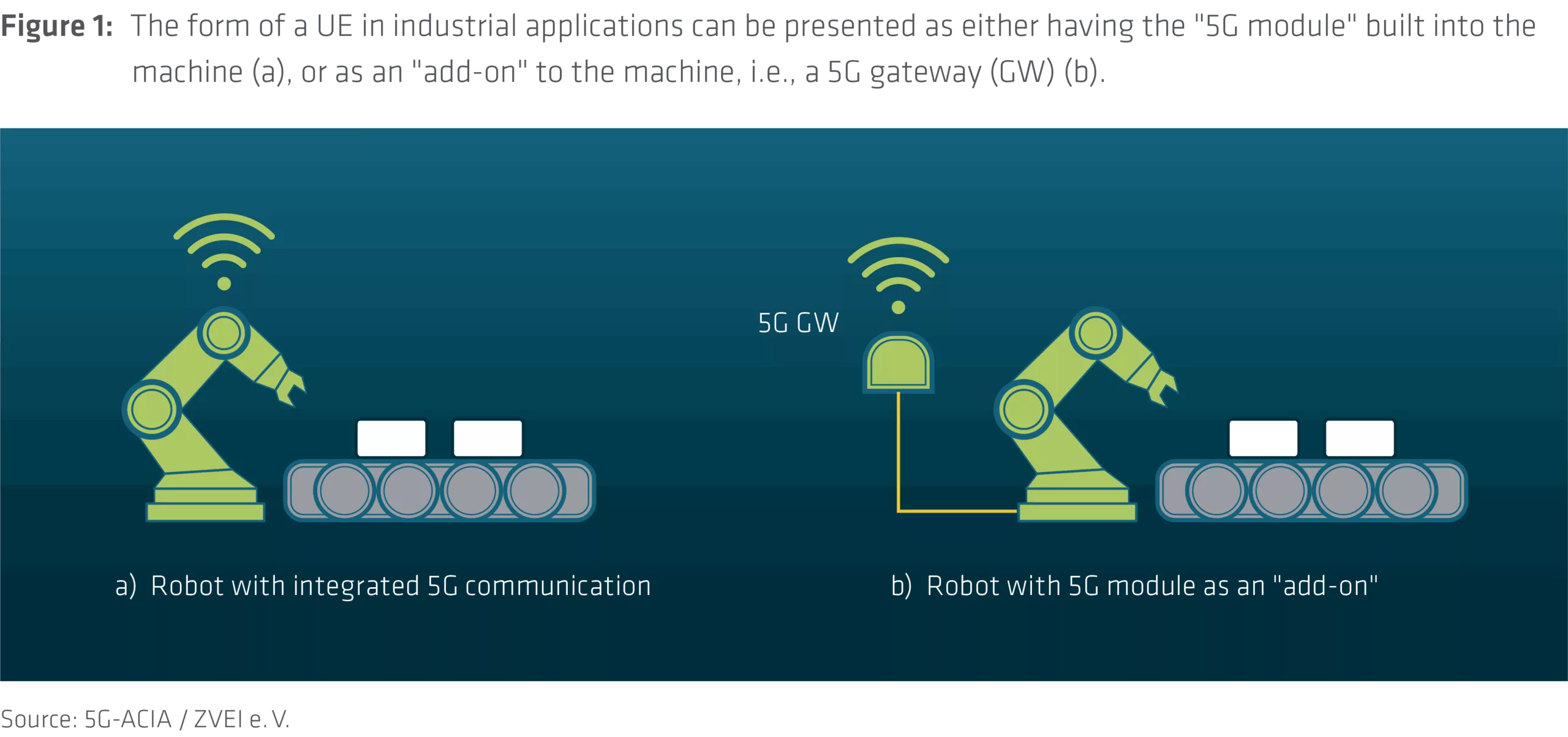A 5G system (5GS) can be broadly divided into three main components: the 5G network, which includes the 5G core network (5CN) and radio access network (RAN); a network management system (NMS); and the user equipment (UE). The UE consists of the mobile termination (MT) and the universal subscriber identity module (USIM), often referred to as the ‘SIM’. Together, these elements enable the UE to establish a radio connection to the 5G network. Additionally, a UE may contain other functions, such as application software/hardware (SW/HW) and supplementary connectivity functions, like layer 2 (L2) connectivity. For further details, please refer to the white paper on “Industrial 5G Devices – Architecture and Capabilities.”
Originally, the term UE was associated with mobile services that provided connectivity and mobility to human users and was tied to “end-user devices”, such as mobile phones, digital pads, and other devices carried and moved around by users. However, with the rise of machine-type communications (MTC) following the emergence of the internet of things (IoT), the scope of the term has expanded. Devices such as sensors, controllers/actuators, point-of-sale (PoS) machines, medical devices, wearable health monitoring devices, and other connected gadgets now also fall under the category of UE, as they are capable of network connectivity.
In the industrial domain, this shift is reflected by machines, robots, and factory equipment being equipped with built-in radio modules to connect to wireless networks. Therefore, the term UE is no longer limited to devices used by people in their daily lives. It is now more broadly defined as “a device or module that provides the capability for 5G communication in compliance with 5G standards.”
From the perspective of 5G-ACIA, UEs in industrial automation use cases can take multiple forms. First, there are handheld devices with 5G communication capabilities that are part of operations. These can include smartphones, tablets, goggles, or even handheld power tools that connect to the network to report status updates and perform other tasks. These UEs resemble the “end-user devices” commonly found in commercial mobile use cases and are easily recognized as such.
However, there is another type of UE commonly found in factory environments that may not be perceived as a typical “UE” based on its form factor. This type is typically a gateway (GW), often enhanced with L2 switching or layer 3 (L3) routing capabilities, connecting devices such as sensors, actuators, or controllers—devices without embedded 5G communication modules—to the 5G network.
Although this gateway-type UE does not appear as a “handheld device,” it still serves as an endpoint in the 5G communication system. It connects to the 5G network through built-in or add-on 5G communication modules that interface with various operational technology (OT) devices. Examples of this type of UE include production robots (as shown in Figure 1), automated guided vehicles (AGVs), automated mobile robots (AMRs), or even stationary cameras, provided they are connected to the 5G network within the factory.

The 5G-ACIA has compiled an Industrial 5G Devices Overview to help end users find a device that fits their applications and industrial needs.
Some important requirements to consider for a UE are as follows:
- Connectivity: Can it connect with the intended 5G network? Does it support the necessary frequency bands?
- 5G features: Does it have the 5G features required for the application, such as RedCap, L2 connectivity support, etc.?
- Performance: Can it achieve the required transmission time, data throughput, and other technical specifications needed for the application?
- Power consumption: If a low-power option is required, what is the power consumption of the UE?
- Connectivity with other devices: Can a GW-UE type connect to various sensors/actuators and controllers (e.g., L2, L3, Bluetooth, IO-Link, etc.)?
- System authentication: What system authentication does it use (e.g., SIM card, eSIM, etc.)?
